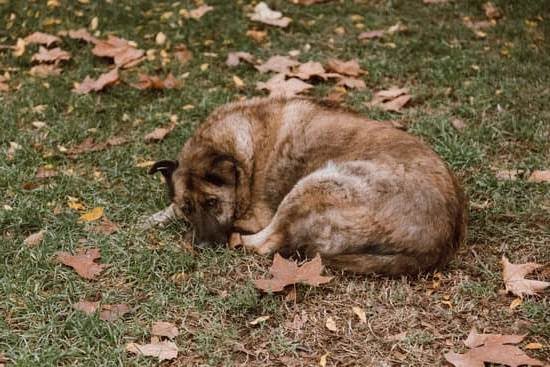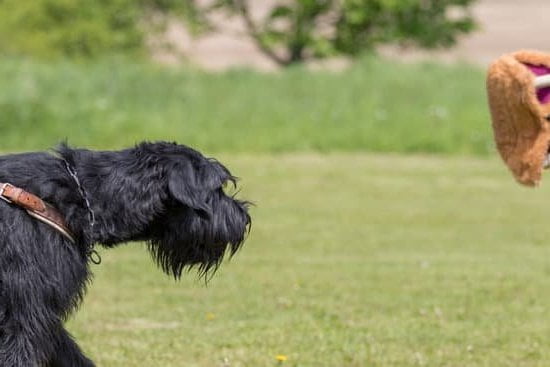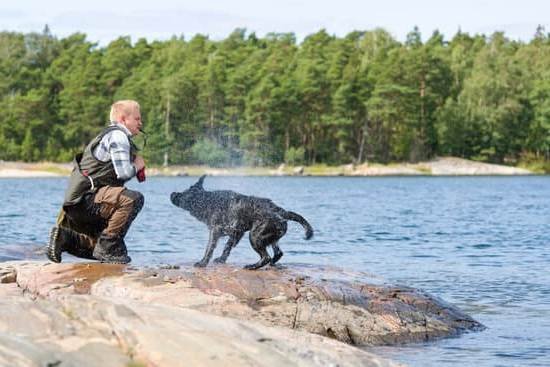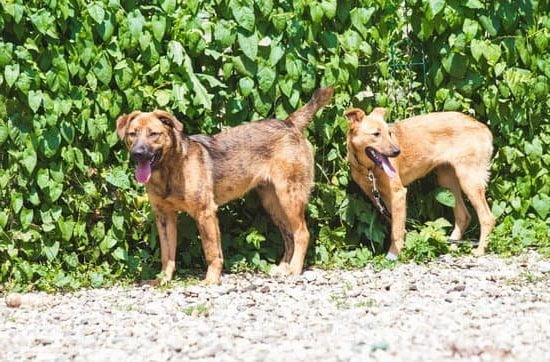Introduction
Training a dog with a Wee Wee pad can be an efficient and convenient way of teaching him or her proper potty training. A Wee Wee pad is basically a moisture-absorbing mat typically made from absorbent materials such as cotton, paper towels, or another synthetic material and covered in plastic film that prevents any liquids from leaking out. The Wee Wee pads come in various sizes depending on the size of your pet; they are usually square in shape and provide a safe, comfortable environment for potty training.
Using the pads allows you to give your pup more freedom within your home while still allowing them to learn the basics of potty training. Additionally, they aren’t messy like outdoor options, so there’s no need to worry about cleanup if you have carpets or furniture. For those with multiple pets, it’s also useful in creating designated areas for each animal, allowing each pet to stay contained while getting used to going on their own personal pad.
An important factor when using Wee Wee pads is consistency–it takes patience and dedication to teach your pup where it’s acceptable for him or her to go. Start by selecting a comfortable place in your home where the pad will go; preferably somewhere close but not too close to where people typically walk around or play with their four legged furry friends . This will help create an area away from distraction so that your dog will associate it as just another normal part of their day. Then place the pad wherever desired, encourage them onto it by using familiar commands such as “go potty,” take them there several times throughout the day at consistent times (preferably right after meals) until they understand that this is part of their daily routine. Rewards (such as treats) can be helpful in reinforcing positive behavior while reinforcing correct elimination of waste on the appropriate areas/pads.. Praise also helps immensely – positive reinforcement goes a long way! Should accidents occur when transitioning into this method remember patience is key; remind yourself that gradual progress should be expected if successful results are desired. Finally regularly change out the pads once used; doing this ensures both cleanliness and sanitation are upheld whilst creating an inviting atmosphere free from odors which may discourage continued use of said pads by your pup!
Preparing the Training Space
Choosing the Right Spot: You will want to choose a spot in your home that is easily accessible and that does not have too much traffic. Make sure the area is wide enough for the wee wee pad, and if you have multiple floors in your home you can also consider placing one on each level of your house.
Setting the Temperature: You should set the temperature in this space to fit your dog’s needs. If they do not thrive in hot temperatures, then try to keep it cooler. Conversely, if they tend to get colder quickly then make sure the space is warm enough for them.
Adding Training Tools and Essential Supplies: Have Wee Wee pads, a training guide, treats or favorite toys, and even a special blanket available to show your pup just how special training time will be. Training can become tedious over time so these items will help change things up and make it more fun! Additionally, having wipes or a cleaning solution handy is always important for quick clean-up after an accident during training or general messes throughout housebreaking sessions.
Training Basics
Introducing the Wee Wee Pad: Prior to introducing your pup with the Wee Wee pad, get familiar with different types of pads and size. Choose one that is easily accessible and disposable which is best suitable for your needs and pet’s comfort. Place the pad in a designated spot and encourage your pet to sniff it and Inspect it using positive reinforcement.
Establishing Your Dogs Potty Spot: Have a specific area where you want your puppy too do their business. Supervise him/her frequently when they are near the pad so that they don’t have accidents elsewhere in the house. Encourage them on each occasion by using verbal words along with claps or treats as reward for successful attempts.
Familiarizing with the Environment: Make sure you have puppy proofed the surrounding area including carpets, chairs, child’s toys etc., to prevent any confusion or mishaps from occurring. Put a bell near the wee wee pad as it will make it easier for them to remember their destination every time they want to go potty.
Instilling Positive Reinforcement: Provide proper guidance to politely discipline your puppy if they create a mess out of their designated spot rather than getting angry at them or punishing negatively in any way; this won’t help but instead will further confuse them. Use effective positive reinforcement whenever necessary so that puppies realize their wrong behaviour. Also reward them when they get it right stressing on how important this behavior is; this will boost up self-confidence while making sure that they understand what you expect from them!
Daily Routine
Having a structured daily routine for potty training your pup is essential to the process. Start each day by ensuring that your dog has enough food and water to keep them nourished and hydrated. Feeding at designated times is key; this helps give your pup’s digestion system regularity, so they will naturally understand when it is time to go potty as well.
In addition to feeding, remember to give your pup scheduled breaks throughout the day—ideally after meals and at least every couple of hours. During these breaks, bring your dog outside to the same designated spot each time until they’ve become accustomed to its familiarity as their potty area. After walks or other physical activity, always take them out for a quick break as well.
Of course, it’s also important to make sure that there’s ample playtime in the day too! Make sure that you schedule active play with your pup at least once per day: playing fetch, teaching tricks or simply taking a leisurely stroll will help motivate them to do their business outside versus inside. Show knowledge and enthusiasm when you spend time with them so they can trust this same behavior when it comes to potty training.
Lastly, don’t forget about wee-wee pads! If your dog has an accident indoors, place some pads next to where they were before and take your pup straight over it after each meal or break. This will help acquaint their brains with the idea of indoor vs outdoor toilet usage—hopefully helping speed up their learning curve in the meantime too.
Cleaning Up Accidents
When cleaning up small accidents, like those caused by a puppy learning to use Wee Wee pads, it’s important to ensure complete removal of the smell and stain. First, if the mess isn’t too big, you should start simply by removing as much of it as possible by picking up any solid matter with a paper towel or an absorbent cloth and disposing of it before treating the area with a pet-friendly cleaner or mild detergent. After that, spray liberally on the affected area and allow it to air dry.
When teaching your dog to clean up on their own, there are several methods that can be used. A common suggestion is to layer various types of sheets over the training pad in order for them to better distinguish between indoors and outdoors when going potty. Also, using products like citronella sprays or scented sprays can help ward off false signals from pets expecting to eliminate after coming into contact with such scents. Finally, clapping your hands or making other verbal approval when they go in an appropriate spot and scolding when they do anything else can help train them which spots are acceptable for peeing and pooping in your home!
Advanced Potty Training Techniques
Litter Box Training: Training your dog to use a litter box is great for those of us who cannot always be home right when nature calls. This technique requires patience as both you and your pup will need guidance to learn the new task. Start by introducing the litter box in an area that is out of the way. Put your pup inside the box, praise them if they show interest, then put larger pieces of their waste in it so they can smell where it belongs.
Using Crate Training: Crate training is one of the most effective ways to potty train your pup in a convenient and stress-free way. Confining him or her in a smaller room gives them a spot to go for elimination and keeps messes off your floors. Once your pup is already used to his/her crate, you can leave them for short periods for times when you are unable to supervise them directly. Keep some toys around so they don’t get bored and make sure to take out any bedding if it gets wet from accidents.
Correcting Behavior: Potty training takes time and patience; keep positive while still managing expectations with rewards and correction methods when necessary. If you catch him/her mid-act, clap loudly or say “no” sternly so they know this behavior isn’t accepted anymore. Again, follow up with reward systems or punishments accordingly as continued reinforcement may help them understand better over time what is expected of them.
Housetraining Outdoor Dogs: Housetraining outdoor dogs comes with its own set of rules and considerations compared to indoor dogs – as dogs tend to mark their territory more openly outdoors as compared to indoors (including on plants, furniture and walls). Start off by mapping out designated areas for eliminating before allowing outdoor access. Supervise closely when outside – give cues like “go potty” periodically until nature calls, then offer praises once finished! Be consistent during housetraining periods so he/she knows exactly what behavior is expected from them all the time!
Troubleshooting
Training your pup with a wee wee pad can be difficult, and there will be accidents along the way. Severe accidents happen for many reasons, such as if your pup is soiling in the same area over and over again or not using their wee wee pad. First, you should make sure that your pup has access to the pad at all times; if it’s blocked or out of sight, they may not remember where it is. You also want to ensure that there are no messes near the weewee pad, as this can confuse them into believing it’s ok to eliminate on the floor.
If the severe accidents persist despite these changes, it might be time to seek help from a professional trainer or behavior consultant. In certain cases, medical issues may cause accidents, so checking up on their health is paramount. Additionally, trainers and consultants can provide you with helpful guidance for proper housetraining techniques based on your pup’s individual personality and needs. They can even teach you how to redirect behaviors and foster positive associations around eliminating in an appropriate spot.Ultimately, seeking professional assistance during training teaches both you and your dog how to efficiently train and address other behavioral issues.
Conclusion
Once your dog has mastered all the commands associated with going to the wee wee pad, you should move on to celebrating their success! Take her out of doors and reward her for using the outside grass or patio. Praise him when she uses it in appropriate places and also praise him for avoiding going to your carpets or furniture. Make sure that you give them adequate amounts of attention, love, and affection as this will entice your pup to use their wee wee pad more frequently. When accidents do happen (which is expected during potty training) don’t yell at your pup because this is not conducive for learning! Instead, redirect them back to the wee wee pad by calmly repeating their command phrase and leading them back towards it. With patience and consistency, your furry friend will learn these important lessons and be fully trained in no time!

Welcome to the blog! I am a professional dog trainer and have been working with dogs for many years. In this blog, I will be discussing various topics related to dog training, including tips, tricks, and advice. I hope you find this information helpful and informative. Thanks for reading!





